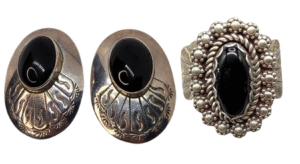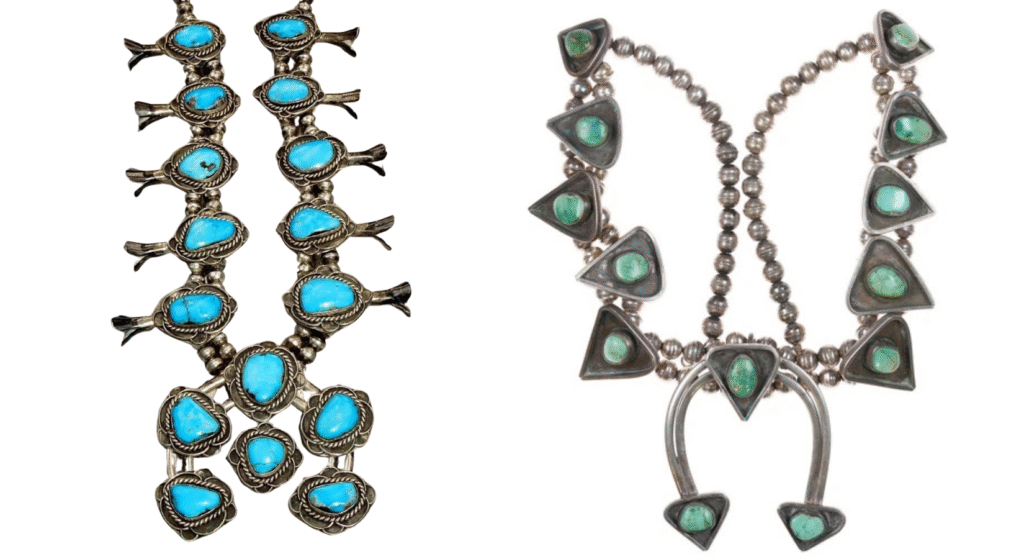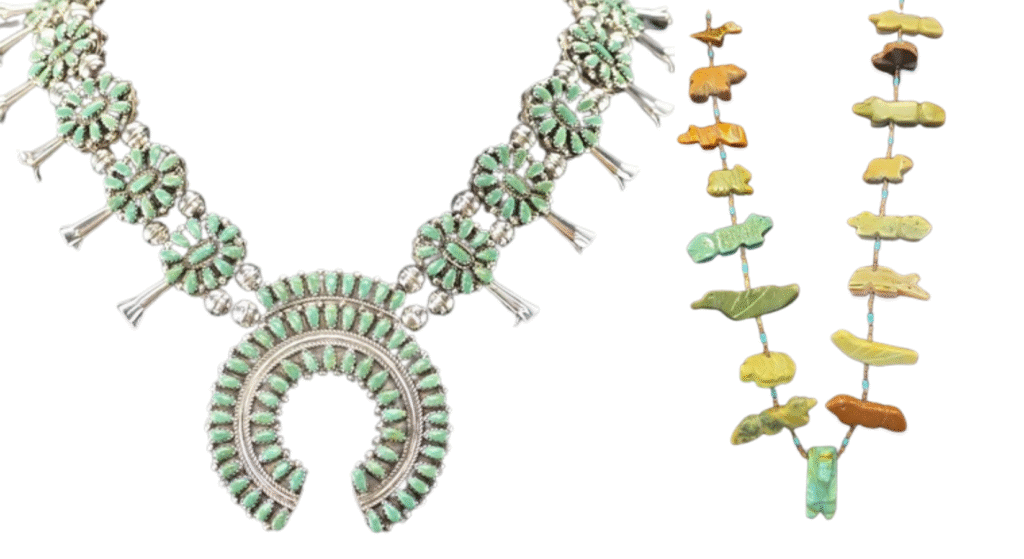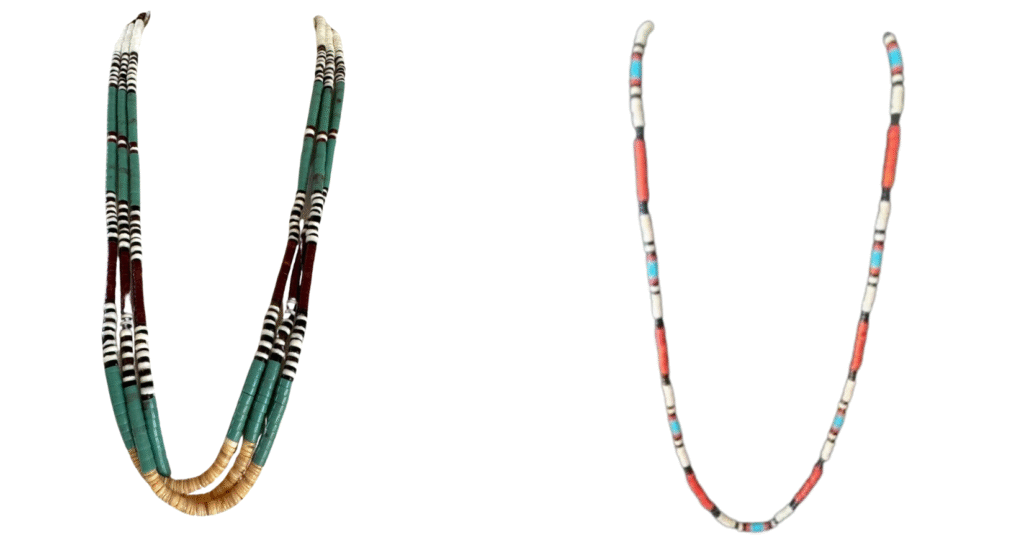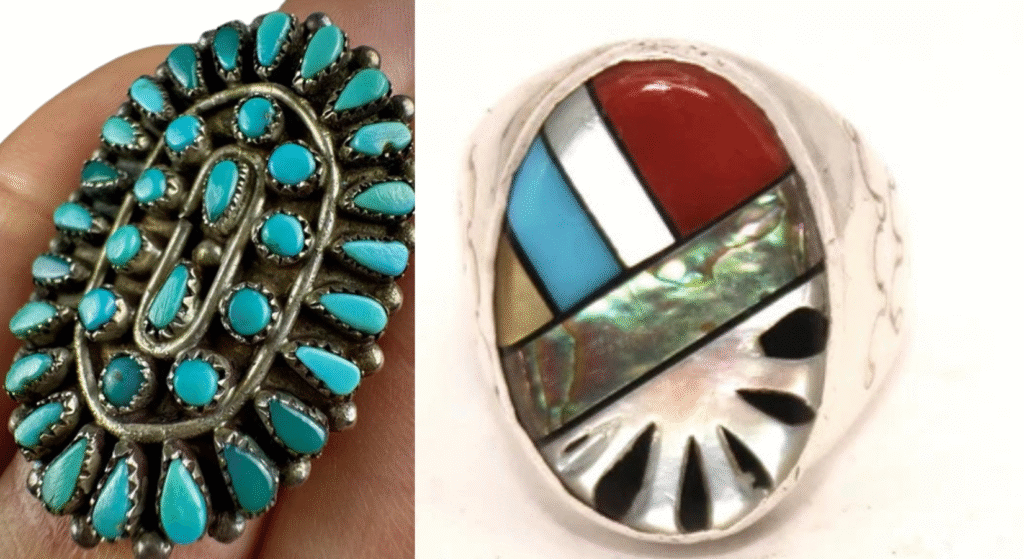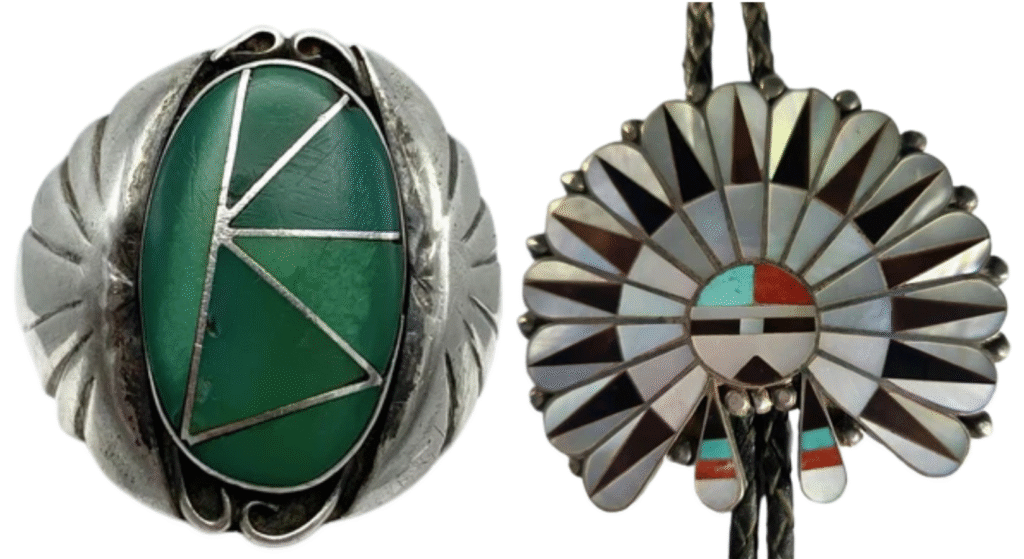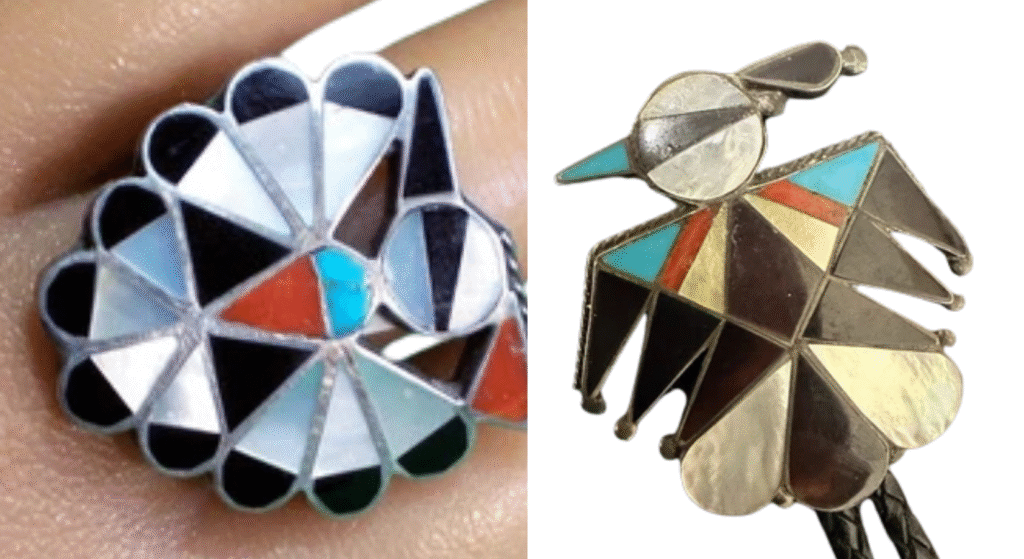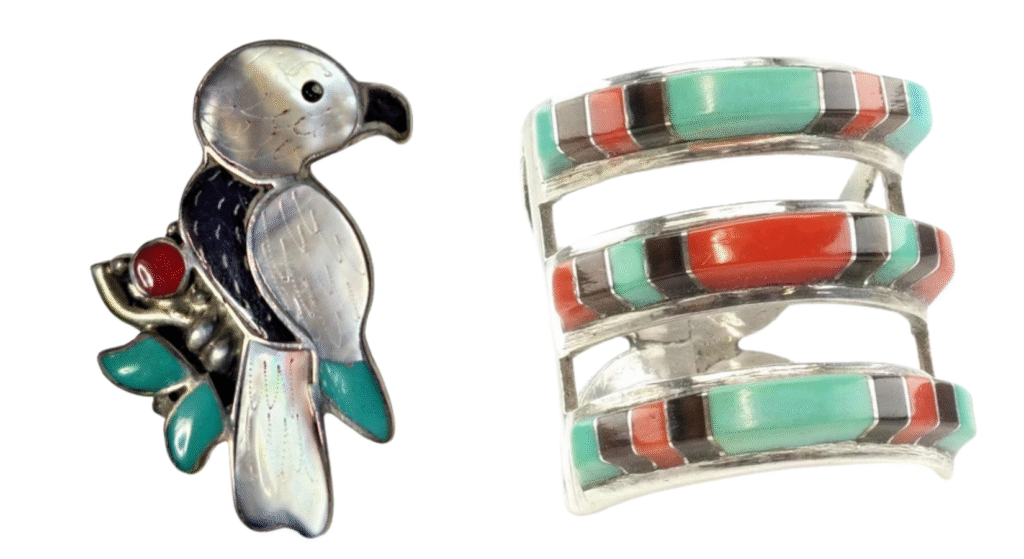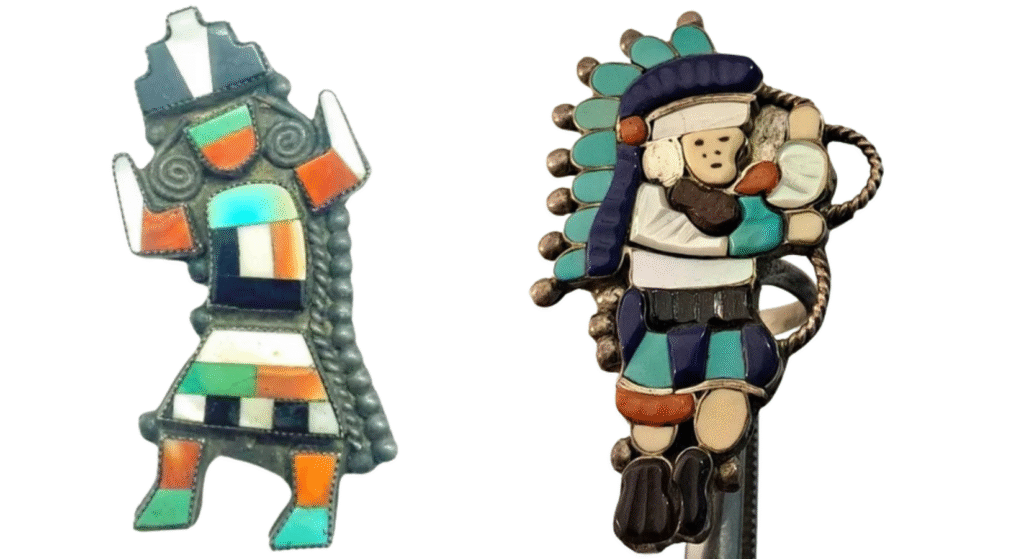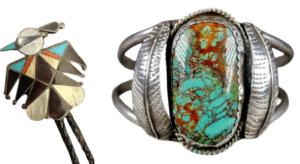
Semi-precious stones have always had a special place in Native American jewelry, symbolizing more than just adornment. For many Native tribes, these stones are an extension of their cultural identity, carrying deep spiritual meanings and historical significance. They add an extra layer of beauty and mystery, often connected to the earth with spiritual ties that resonate deeply with tribal customs.
So, what exactly makes a stone ‘semi-precious’? In simple terms, it refers to stones that aren’t classified as precious gems like diamonds or sapphires but are treasured for their unique colors, patterns, and spiritual qualities. Think of them as the unsung heroes of the gem world, each with its own story to tell.
For Native Americans, each piece of jewelry isn’t merely a fashion statement. It’s a reflection of their beliefs, history, and connection to nature. Wearing jewelry made from semi-precious stones like turquoise or coral is akin to wearing a piece of their heritage. These stones often feature in important rituals, too, making them integral to both everyday life and ceremonial events.
This connection between stones and Native American identity isn’t just about aesthetics. It’s about bridging the past with the present, maintaining a sense of continuity through the art of jewelry making. Each stone tells a different story, carrying wisdom and traditions that go beyond the physical object itself.
So, if you find yourself enchanted by a piece of Native American jewelry, remember there’s more than what meets the eye. Each stone holds a tale, a piece of history waiting to be shared, providing a tangible link to an age-old culture and its vibrant traditions.
Historical Context of Native American Jewelry Crafting
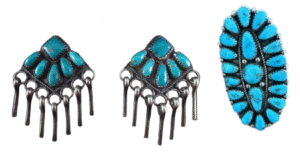
Native American jewelry isn’t just about wearing beautiful artifacts; it’s about showcasing the evolution of a deeply rooted artistic tradition. It spans thousands of years, tracing back to when ancient tribes first began adorning themselves with stones, shells, and beads.
The art of jewelry making among Native tribes has always been about more than just aesthetics. Different tribes developed unique styles and techniques, showing off their skills and creativity, which still influence jewelry designs today. Think of the intricate beadwork from the Great Plains tribes or the silverwork from the Navajo as templates that modern Native artists still draw inspiration from.
Materials like bone, wood, and later, metals, tell stories of a resourceful people. Native artisans used what’s available, transforming everyday materials into stunning jewelry that adorned leaders and everyday folk alike. Each piece wasn’t just decorative—it played a role in rituals and everyday life, marking significant events from births to weddings.
But Native American jewelry isn’t frozen in time; it’s dynamic and ever-evolving. As contact with Europeans introduced new materials like silver, Native artisans didn’t hesitate to incorporate these into their crafts, blending old and new methods seamlessly. This adaptation showcases the resilience of Native culture, keeping their traditions alive while embracing change.
Understanding how jewelry craftsmanship has evolved among Native tribes offers a window into their resilience and creativity. It’s a testament to how these communities have not only survived but thrived, even when faced with historical challenges. Today, Native jewelry continues to inspire, showing us how the past and present are intricately linked through skilled hands and artistic vision.
Types of Semi-Precious Stones Used in Native American Jewelry
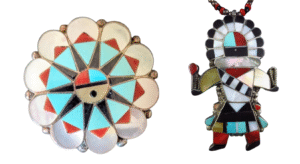
Native American jewelry features a stunning array of semi-precious stones, each with its unique charm and history. Turquoise, perhaps the most iconic, is cherished by many tribes. Its vibrant blue-green hues symbolize water and sky, bringing with them healing properties and spiritual protection. It’s not just a pretty stone; it’s laden with cultural and mystical significance.
Coral, with its warm, earthy tones, offers a striking contrast to the cool blues of turquoise. This stone is particularly valued among Southwestern tribes, reflecting a deep connection to the sea and the nurturing qualities of the earth. Lapis Lazuli, with its deep celestial blues, is another favorite, known for its calming presence and association with wisdom and truth.
Many Native artists also include other stones like agate, jasper, and onyx in their designs. Each stone is chosen not just for its beauty but for the distinctive meanings they hold. For instance, agate is prized for its grounding qualities, while jasper is celebrated for fostering courage and resilience.
Availability of stones often dictated design choices, too. Regions rich in turquoise and coral naturally saw these stones take center stage in jewelry making. Meanwhile, tribes without easy access to these stones would incorporate local materials, demonstrating adaptability and resourcefulness.
The choice of stones reflects a deep respect for nature and its offerings. Understanding the variety and symbolism of these stones helps us appreciate the skill and thought behind every piece of Native American jewelry. It’s not just about wearing a stone; it’s about cherishing centuries of wisdom and cultural expression encapsulated in each design.
Cultural and Spiritual Significance of Stones in Jewelry
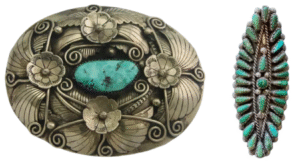
Jewelry for Native American tribes goes beyond fashion—it’s a cultural tapestry woven with spiritual narratives and tribal lore. Each stone in a piece of jewelry reflects a unique cultural significance and spiritual meaning. For example, turquoise isn’t just a color; it’s a symbol of protection and blessings, deeply revered across many tribes.
In Native traditions, wearing a stone isn’t just about the aesthetic. It’s believed to carry intentions, blessings, and tribal spirit. Jewelry pieces become personal talismans, manifesting courage, love, health, or protection based on the stone’s inherent qualities.
The designs themselves are storytellers. Many pieces convey tribal history and ancestral wisdom, serving as oral histories carved in stone and metal. Jewelry becomes a form of communication—a way to honor the spirits of ancestors and offer respect during sacred ceremonies.
Each tribe often has its own interpretations and rituals associated with the stones. While many stones share similar meanings across different tribes, local variations emphasize distinct cultural narratives. Stones have a ceremonial presence too, used widely in rituals to mark life’s milestones—like birth, marriage, and beyond—embedding them throughout the social and spiritual fabric of the society.
The beauty of Native American jewelry lies in its deep roots in spirituality and culture. The stones act as a bridge, connecting the physical world with spiritual realms. This blend of beauty, spirituality, and tradition offers a rich tapestry, showing how jewelry isn’t just an accessory, but a vibrant chapter in the story of its people.
Techniques and Methods in Traditional Jewelry Making
The artistry behind Native American jewelry stems from age-old techniques passed down through generations. These methods are as varied as the tribes themselves, with each bringing its own flair and expertise to the craft. Silverwork and intricate beadwork are just a few of the many techniques that have distinguished Native American jewelry for centuries.
Among the Navajo, silverwork stands out as a signature style. They became renowned for their use of silver, which they skillfully transformed into stunning pieces often adorned with turquoise. Hammering, stamping, and casting are all traditional methods that continue to be employed, each requiring precision and expertise developed over generations.
Beadwork, particularly prominent among the Plains tribes, involves a meticulous process of threading tiny beads into elaborate patterns. This technique showcases not only patience and skill but also the complex cultural narratives these designs often embody. The use of vibrant colors serves a dual purpose: enhancing the aesthetic appeal while conveying specific cultural meanings.
Another common technique is stone inlay, where artisans carefully fit stones together like pieces of a puzzle to create beautiful mosaics. This method is especially popular in Zuni jewelry, producing intricate designs that are as mesmerizing as they are symbolic.
Each tribe has developed a unique way of incorporating stones into their designs, blending artistry with cultural stories. From using quills and leather to carving intricate designs, these methods represent a living tradition, continuously evolving while honoring its origins.
Understanding the intricacies of these techniques allows one to truly appreciate the craftsmanship behind Native American jewelry. It’s not just about creating a piece—it’s about preserving a culture, celebrating heritage, and showcasing the timeless beauty of intricate artistry.
Revival and Modern Influence of Semi-Precious Stone Jewelry
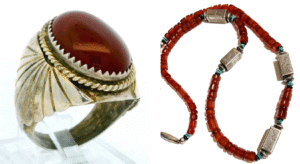
In recent times, there’s been a vibrant resurgence of interest in Native American jewelry, integrating old-world techniques with contemporary aesthetics. Modern Native artists are at the forefront, drawing from rich traditions while infusing new elements to capture today’s style sensibilities.
These artisans are not just keeping traditions alive but are also innovating within the framework established by their ancestors. They continue to use stones like turquoise and coral, but with fresh creative twists. Think asymmetric designs, minimalist settings, and unexpected color combinations that appeal to a diverse audience.
Social media and global platforms have played a huge role in the modern appreciation of Native American jewelry. Artisans can now share their creations with a global audience, showcasing the meticulous handiwork and cultural stories behind each piece. This has led to a heightened appreciation and demand for authentic, handcrafted Native pieces.
Today, there’s a noticeable blend of tradition and modernity in Native jewelry. Some designers intertwine traditional beadwork with metal elements, creating striking juxtapositions that honor heritage while stepping boldly into the future. Others may include contemporary motifs or use innovative materials while maintaining a nod to traditional techniques.
This modern renaissance is about more than design. It represents a reclaiming of cultural narratives, allowing Native artists to define their identity and express it through their work. The fusion seen in today’s pieces highlights how tradition and innovation can coexist, offering something new to the world while respecting the past.
Semi-Precious Jewelry as a Means of Economic Empowerment
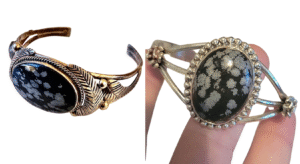
Jewelry making offers more than cultural expression for Native communities; it’s a powerful avenue for economic empowerment. Artisanship in jewelry provides essential income sources, supporting families and revitalizing local economies.
For many Native artists, craftsmanship enables them to thrive in a marketplace that appreciates unique, handcrafted items. It’s not just about creating art—it’s about turning that talent into sustainable livelihoods. This transition from craft to commerce ensures cultural traditions keep flourishing while economically benefiting the communities.
The demand for authentic Native American jewelry has surged globally, creating opportunities for artisans to reach wider audiences while preserving their cultural narratives. With the rise of e-commerce, Native artisans can sell their wares directly to buyers worldwide, reducing dependency on middlemen and securing fairer prices for their work.
Fair trade practices and ethical sourcing are vital conversations in this space. By promoting ethically sourced materials, the industry helps protect natural resources and ensures artisans receive fair compensation. Consumers increasingly seek assurance that their purchases support an ecosystem that values both tradition and fair labor practices.
Success stories are not hard to find. Many Native artisans have built reputable brands, gaining recognition for their exceptional craftsmanship and distinct style. These stories often inspire a new generation of artists who see jewelry making not just as a potential career but as a way to connect with their heritage.
For buyers interested in supporting Native artisans, learning about the origins of their jewelry and the stories behind the pieces can enhance appreciation. Making informed purchases helps sustain these artistic traditions while contributing to the economic wellbeing of the artists and their communities.
Conclusion: The Ongoing Legacy of Semi-Precious Stones in Native American Jewelry
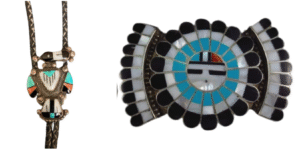
Native American jewelry has always been more than just wearable art. It stands as a testament to centuries of culture, artistry, and resilience. The ongoing legacy of semi-precious stones in these creations reflects the timeless connection between people, their history, and the land around them.
These jewelry pieces remain as vibrant and relevant today as ever, offering a bridge between past and future generations. They encapsulate the spirit of resilience and creativity inherent in Native cultures, serving not just as accessory items but as a means of cultural preservation and celebration.
Looking ahead, Native American jewelry continues to evolve, with artisans drawing from a deep well of tradition while experimenting with new materials and techniques. This adaptability ensures that while the modes of expression may change, the core values and stories remain intact, resonating with a global audience.
Challenges persist, especially in protecting the authenticity and cultural rights of the artisans. Supporting genuine Native American jewelry involves more than a financial transaction; it’s about respecting and uplifting the cultures that craft these precious pieces. Advocacy for ethical practices and recognition of artisanship is crucial in safeguarding these cultural treasures.
As consumers and admirers, it’s our role to cherish and support these artists by choosing authentic pieces and engaging with the stories behind them. When you wear a piece of Native American jewelry, remember you’re not just adding a beautiful piece to your collection—you’re celebrating a vibrant cultural legacy and helping ensure its future.
Beyond the craftsmanship, these pieces urge us to recognize the rich tapestry of meaning and tradition stitched into every stone and metal piece. Embracing this understanding keeps the legacy alive, honoring the lineage of those who came before and inspiring those who will come after.
